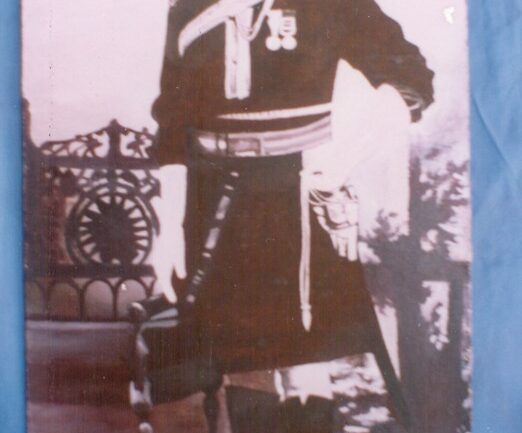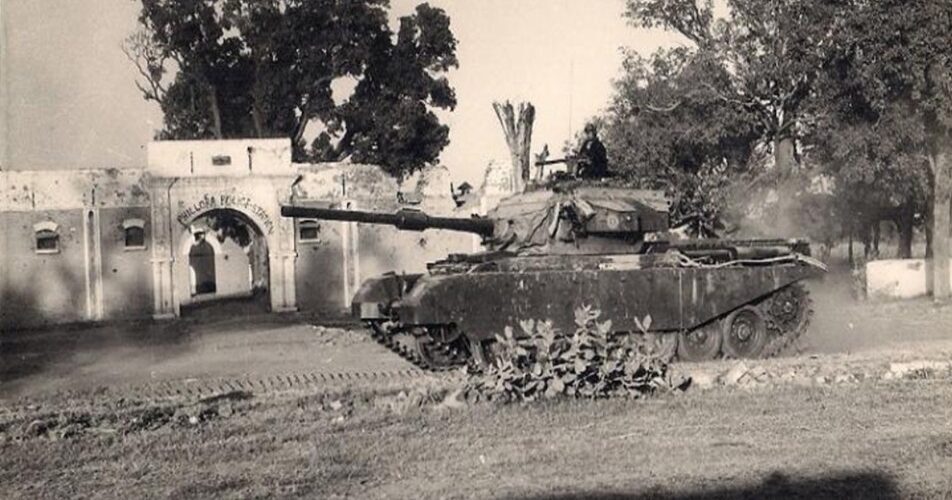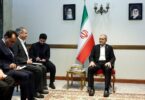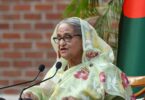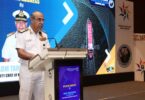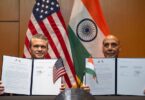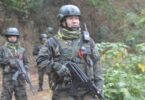Pakistan’s first tin-pot president, self-promoted Field Marshal Ayub Khan, feeling very heady with a large package of arms from the US and under the delusion that after the 1962 Sino-Indian war, Indian Army was weak, launched Pakistan’s second war against India.
Thanks to America’s dole Pakistan's army had 17 to 18 tank regiments with about 900 tanks, outnumbering India's 14 tank regiments with just over 700 tanks, all of World War II vintage. India’s main artillery guns were the old 25 pounders and 3.7-inch howitzers. Pakistan’s artillery had been propped up by American-made M114 155mm and M110 203mm howitzers, alongside the 25-Pounders and 3.7-inch howitzers used by both sides. Pakistan’s air force had freshly doled out American Sabre jets, while the Indian Air Force’s mainstay was the older Gnat fighter.
The second war waged by Pakistan began in January 1965 with border skirmishes in the Rann of Kutch, which failed and ended in July. In August it launched an operation in Jammu Kashmir aimed at inciting an uprising among the local population and capturing territory. That too failed. Then, in barely three weeks from 28 August to 22 September 1965 in the plains of Jammu and Punjab, there were several fierce infantry actions and large tank battles fought for the first time since World War II. Pakistan’s losses were 3800 personnel killed, over 400 tanks destroyed/ captured, over 40 aircraft shot down and a deep drop in the morale of its forces.
Indian Army captured Haji Pir, reached Lahore, captured Phillora and created Patton Nagar, a graveyard of almost 100 destroyed tanks at Khem Karan.
Prime Minister Lal Bahdur Shastri, who went in January 1966 to Tashkent for the peace talks, ceded Haji Pir back to Pakistan and returned in a coffin as a result of an unnatural death, which was deliberately not investigated and reported by the government as a heart attack.
Pakistan’s leading English daily, ‘The Dawn’ of 6 September 2005 carried a comment, “…. the 1965 war also led to an embargo of US arms supplies to Pakistan. Islamabad's use of American arms against India was against the assurances given by President Dwight Eisenhower to Prime Minister Jawaharlal Nehru that in case Pakistan used US-supplied arms against India, necessary corrective action would follow. Though the Pentagon and the US bureaucracy were prepared to look the other way if Pakistan had won the war, they found it difficult to overlook the miserable performance of Pakistani armour at Khem Karan”. In the same newspaper, Air Marshal (retd) Nur Khan, Chief of Pakistan Air Force during this war and one who was kept the dark about Operation ‘Gibraltar’, was quoted, “It was a wrong war. And they mislead the nation with a big lie that India provoked the war and that we were the victims of Indian aggression”.
It is relevant to relate the account of Indian Army’s tank regiment, 4 Horse, also known as Hodson’s Horse, because:
- Ayub Khan’s father, Risaldar Major Mir Dad Khan served in it.
- It destroyed the maximum number of enemy tanks –79 (mostly newly acquired superior Pattons from the US) and 17 recoilless guns with World War II vintage Centurian tanks.
- 4 Horse is the only regiment in which the commanding officer’s tank destroyed four enemy tanks despite being hit four times and after having to bail out when the tank caught fire, he and his crew fought dismounted with small arms and evaded capture.
- This regiment reacted swiftly to fast changing situations and was also a classic example of armour turning the flank and destroying superior forces by skillful maneuver and surprise.
- Despite great odds like enemy’s superior/newer tanks and lack of maps and other equipment, moved to all required locations and fulfilled all tasks beyond higher commanders’ expectations.
- Outstanding bravery of all ranks some of who died, some got severely wounded and some were disabled.
An excerpt from the personal account of the battle of Phillora by the Commanding Officer, Lieutenant Colonel (later Brigadier) M.M.S. Bakshi, is worth mentioning.
By September 11, Hodson’s Horse had put a tight squeeze on Phillora. We were not only keeping the enemy’s Phillora defences fully engaged but also destroying everything falling back from the Gadgor defences. Meanwhile, 17 Horse had also fetched up from the direction of Libbe and made contact with Phillora from the south and south-west. Thus, our armour had virtually put a ring around Phillora, and threatened its lifeline to Chawinda. Just after midday, we intercepted an enemy wireless message. “We are pulling out from Chobara, Gadgor and Phillora. One of our units has been overrun at Gadgor, we are pulling back to Fatehpur”.
The enemy had evidently been unnerved. Not much of this force was, however, allowed to escape to Phillora as “A” squadron was lying in wait for it in area Wachoke-Saboke and decimated the bulk of its mobile elements moving by road. By 1530 hours Phillora was taken by 17 Horse and 43 Lorried Infantry Brigade. Much booty was left behind by the enemy at Phillora. A jeep belonging to GOC 6 Armoured Division complete with his flag and star plates was captured intact. Besides, a map lorry with a good stock of maps and the usual paraphernalia of a hurriedly-abandoned HQ was found littered all over. Thus, our problem of maps was solved for good.
In this battle 51 enemy tanks were destroyed by 1 Armoured Brigade, of which 4 (Hodon’s) Horse accounted for 27. Our brigade had suffered six tanks destroyed and nine damaged.
Other than my tank, we had no tank losses in 4 Horse, and none were seriously damaged. This was the first big day for the regiment and all the squadrons had done their job magnificently. For the enemy, it was a disaster of the first magnitude. Severely punished in his first big armour clash with us, his morale was so badly shaken that he gave up the fight for Phillora which could otherwise have been a tough nut to crack.
It was also a classic example of armour turning the flank and destroying superior forces by skillful manoeuvre and surprise. By delivering this crushing blow, we had established our moral ascendancy over the enemy to such an extent that from then on he fought shy of facing us with his armour in a mobile battle. In the days that followed he repeatedly abandoned his tanks as soon as our tanks challenged him to a duel. Many such tanks later fell into our hands intact.
While the regiment got 43 gallantry awards, brief mention about some personnel is relevant. Actions of the tank crews of Lt Col MMS Bakshi, Maj Bhupinder Singh and many others reflect the fearlessness of fighting with cupolas open and not abandoning their tanks despite taking even four hits and bailing out only when the tanks caught fire. Major Bhupinder’s tank caught fire and by the time he was bailed out he had suffered from burns. Pakistani tank crews bailed out immediately on getting hit once, even if their tanks’ main guns and/or machineguns were functional, because of their religious belief, that getting burnt meant going to Jahannoom (hell). That is how many of their tanks in a repairable condition were abandoned.
Lieutenant (later Colonel) Ashok Sodhi became a victim of Pakistani tank crews’ poor gunnery, when an armour-piercing round failed to hit the tank but grazed his skull shattering a 3 inches diameter part of it. He was in a coma in Army Hospital Delhi for over 30 days, after which he recovered with a fresh lease of life and a plate covering the shattered part of his skull. Lt Charanjit Singh was killed by being hit in the head during air strafing. Captain (later Brigadier) Jasbir Singh Hundal, the Reconnaissance Troop Leader had many near misses while operating in an open jeep throughout the duration of the war. Lieutenant (later Lieutenant Colonel) SC Mathur, Mentioned in Despatches for bravery, an emergency commissioned officer then, received release orders during the war. On strong recommendations for his valour, he was eventually retained and granted permanent commission. Captain (later Brigadier) Ravi Malhotra, Signal cum Intelligence officer in Col Bakshi’s tank, was recommended for Vir Chakra, but got Mentioned in Despatches. The only Vir Chakra for outstanding valour was Lance Dafadar Udham Singh, that too, posthumously. Major Desraj Urs, C Squadron Commander lost sight of one eye in which he was hit by a shrapnel. Maj KS Dhillon, ‘A’ Squadron Commander, was severely wounded by shell splinters from a near miss while gallantly directing fire onto an enemy observation post-meant for directing artillery fire. He suffers from a severe permanent limp.
While Major Bhupinder Singh was admitted to Army Hospital, Delhi Cantt for severe burns, Prime Minister Lal Bahadur Shastri came there to meet the war-wounded personnel. When the PM approached his bed, Maj Singh expressed regret at not being able to salute him. Shastri, most overcome, praised his spirit very often, till he was alive. A few days after PM Shastri’s visit, Major Bhupinder Singh died of his burns.
4 Horse was awarded Phillora as a Battle Honour for the Battle of Phillora and while 11 September became instituted as Phillora Day since 1966, this same date also became Nathula Day since 1968, for the Battle of Nathula, Sikkim in 1967, when the same MMS Bakshi was the Nathula Brigade Commander.
The author a strategic affairs analyst and former spokesperson, Defence Ministry and Indian Army, can be contacted at wordsword02@gmail.com, https://www.linkedin.com/in/anil-bhat-70b94766/ and @ColAnilBhat8252




